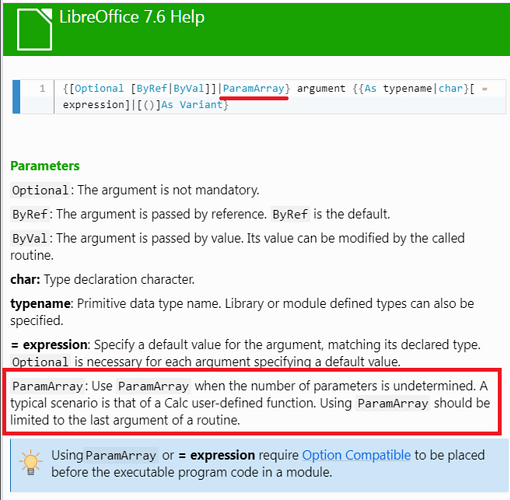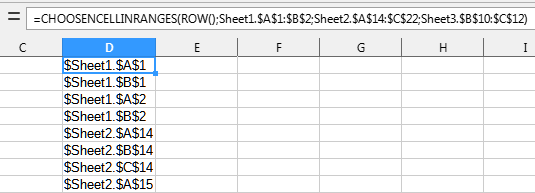Two questions, can user-defined functions in libreoffice calc accept cross-sheet range as arguments?
and how to define function accept variable length arguments like CHOOSE(i, n1, n2, ...)?
cross-sheet range function
I define a single argument function:
function CHOOSERANGE(n as long, range)
dim r
r = "#ERR:502"
dim i
i = 1
for each x in range
if i = n then
r = x
exit for
end if
i = i+1
next
' ReDim range(0 To size-1)
CHOOSERANGE = r
end function
Then I call it as =CHOOSERANGE(1, sheet1.A1:sheet2.B2),
but it return a 504 error code (Function parameter is not valid) .
Some function like SUM can accept cross-sheet range,
can we define these kind of functions with macro?
Variable length arguments function
I searched and get nothing about this topic.
I am very new to BASIC, maybe I used the wrong term.




